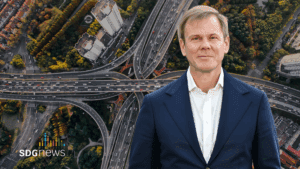3 Key Impact Points:
- COP29 in Baku brings a lexicon of terms crucial for understanding global climate discussions, from financial commitments to emission targets.
- The New Collective Quantified Goal (NCQG) and ‘loss and damage’ fund are major focal points, reflecting global efforts to support climate-vulnerable nations.
- The summit aims to advance Article 6 regulations for international carbon credit trading, essential for operationalizing global carbon markets.
Understanding COP29’s Climate Jargon
With climate negotiations becoming more complex each year, COP29 in Baku is set to tackle a broad range of terms integral to global discussions. Here’s what to know:
UNFCCC and COP
UNFCCC stands for the United Nations Framework Convention on Climate Change. This 1992 treaty committed nearly 200 nations to combat global warming, establishing a secretariat for its implementation.
COP (Conference of Parties) refers to the annual summit under the UNFCCC framework. This year’s meeting, COP29, marks 29 years since the treaty’s enactment in 1994.
Key Financial and Policy Terms
NCQG (New Collective Quantified Goal on Climate Finance): A central topic at COP29, representing the annual funding target for developing countries’ climate efforts.
NDC (Nationally Determined Contributions): Often called “country pledges,” these outline national plans to reduce emissions and adapt to climate impacts. The next wave of NDCs is expected by February, with some nations presenting updates at COP29.
Climate and Emissions Concepts
Global Warming vs. Climate Change: While often used interchangeably, global warming refers specifically to the rise in global average temperature. Climate change includes global warming and its broader impacts, such as extreme weather.
Greenhouse Gases (GHGs): These include carbon dioxide (CO2) and methane (CH4), which trap solar heat in the atmosphere. Industrial activities and fossil fuel use are the primary sources of excess emissions.
Net Zero: This goal means balancing emissions by removing an equivalent amount from the atmosphere, ensuring no net increase in GHG levels.
Agreements and Initiatives
Paris Agreement: Adopted in 2015 at COP21, this treaty aims to limit global temperature rise to below 2 degrees Celsius, ideally capping it at 1.5 degrees. It mandates updated national emissions reduction pledges every five years.
Loss and Damage Fund: Initiated last year with an $800 million pledge, this fund supports nations facing climate-driven disasters. COP29 discussions will focus on fund distribution and securing further contributions. “The fund has a director and a host nation,” indicating progress in its structure and readiness.
Market Mechanisms and Carbon Credits
Carbon Offset (Carbon Credit): A method allowing entities to compensate for emissions by funding reduction projects elsewhere.
Article 6: A Paris Agreement clause concerning carbon offset regulations. COP29 will address unresolved rules to activate international carbon credit markets. “Governments are hoping to resolve rules for trading carbon offsets,” signaling efforts toward functional market mechanisms.
Conclusion
COP29 introduces a critical array of terms that underpin discussions and decisions at the summit. Understanding these can provide clarity on global climate strategies and priorities.
Related Article: COP29: Global Solar Capacity Reaches 2 TW Milestone, On Path to Climate Goal












